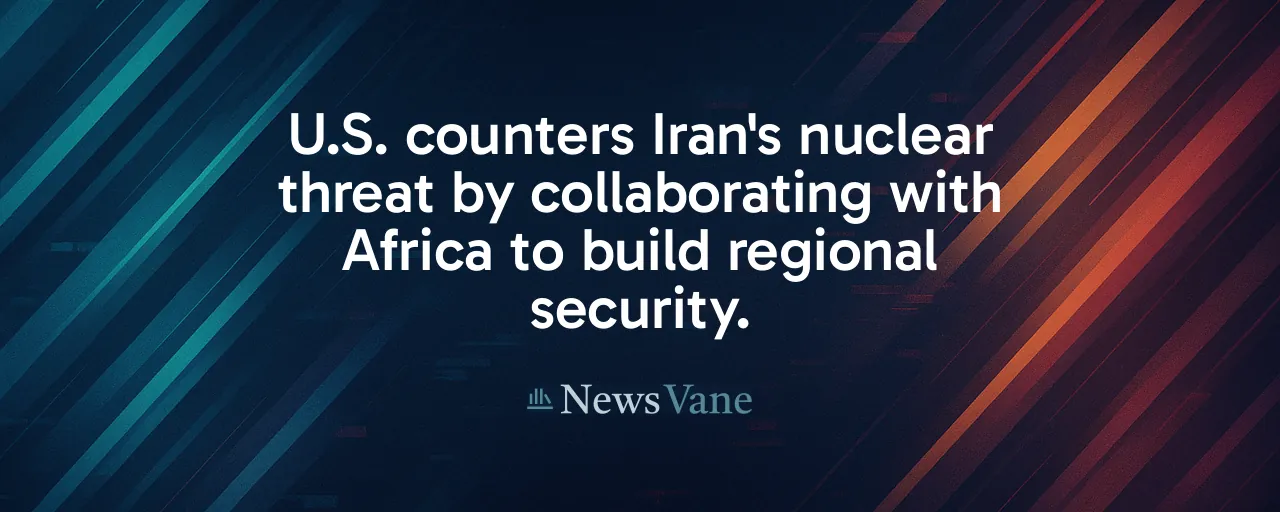A World of Competing Priorities
The United States grapples with intricate challenges across the Middle East and Africa, where terrorism, nuclear threats, and geopolitical rivalries converge. Recent Defense Department testimony to Congress laid out a strategy to safeguard national interests while adapting to a complex global stage. From thwarting Iran's ambitions to empowering African nations, the approach blends strength with collaboration.
Katherine Thompson, acting assistant defense secretary for international security affairs, highlighted goals like disrupting terrorist plots, preventing Iran's nuclear advancements, and bolstering Israel's defense. These priorities unfold amid dynamic threats and competition from global powers, prompting questions about how the U.S. can maintain influence without stretching its resources too thin.
Confronting Risks in the Middle East
The U.S. Central Command operates in a region marked by volatility. General Michael Kurilla, the command's leader, pointed to Iran's stockpile of uranium enriched to 60 percent, sufficient for several nuclear weapons if further processed. This escalation drives U.S. efforts to block Iran's nuclear path, a concern shared widely among policymakers.
Iran's proxy groups, including Hezbollah and Yemen's Houthis, have launched over 175 attacks on U.S. and allied forces since October 2023, with a tragic strike in Jordan claiming three American lives. U.S. operations, such as those in Yemen restoring safe passage for ships, and advisory support in Iraq, where local forces now spearhead anti-ISIS efforts, aim to stabilize the region with minimal direct involvement.
Empowering African Allies
In Africa, the U.S. Africa Command focuses on building local capacity. General Michael Langley joined the African Lion 2025 exercise in Morocco, a training event uniting 52 nations and 10,000 troops. Such initiatives reflect a commitment to helping African countries tackle threats like terrorism and border insecurity on their own terms.
With 3,300 personnel at Camp Lemonnier in Djibouti, the U.S. maintains a lean presence supporting multiple missions. Programs like the Trans-Sahara Counterterrorism Partnership equip 11 nations with training and logistics, reducing the need for U.S. troops. Langley's engagement at the African Chiefs of Defense Conference in Kenya highlights the importance of listening to African leaders to align security goals.
Rival Powers in Africa's Spotlight
Africa's vast resources and growing population of 1.7 billion draw intense global interest. China's naval base in Djibouti and pursuit of Atlantic ports signal ambitions to expand its military reach. Russia offers arms and security deals, appealing to governments skeptical of Western terms. These efforts complicate U.S. goals in a region rich with oil, gas, and rare minerals.
The U.S. responds with trade initiatives like Prosper Africa and security partnerships emphasizing mutual interests. Yet, many African nations engage all powers to maximize gains, a strategy known as omni-alignment. This reality pushes the U.S. to integrate military aid with economic and diplomatic efforts to remain a valued partner.
Sharing the Security Load
A core U.S. strategy is encouraging allies to take on greater responsibility. A $142 billion defense deal with Saudi Arabia strengthens regional stability, while NATO allies face calls to boost defense budgets. In Africa, enabling local forces reduces U.S. deployments, as seen in 315 drone strikes in Somalia and advisory roles elsewhere, marking a shift toward partner-led security.
Views on this approach vary. Some experts advocate for diplomacy and development to address underlying issues like poverty, warning that military focus can spark instability. Others stress visible strength to deter adversaries like Iran or China, citing the missile defense system deployed to Israel as a successful example of deterrence.
Charting the Future
The U.S. faces a pivotal moment in the Middle East and Africa, balancing urgent threats like terrorism and nuclear risks with long-term challenges like global competition. The Defense Department's strategy seeks to protect national interests while leaning on partnerships and measured engagement to sustain influence.
Success hinges on careful alignment of military, diplomatic, and economic efforts. Empowering African nations while countering rival powers, or deterring Iran without sparking wider conflict, demands precision. The U.S. stays attuned to its partners' needs and considers diverse perspectives to navigate these complex regions.
As the Middle East and Africa evolve, the U.S. has a chance to foster stability through cooperation. By blending strength with restraint and listening to local voices, it can build a foundation for security that benefits both its interests and those of its allies.
